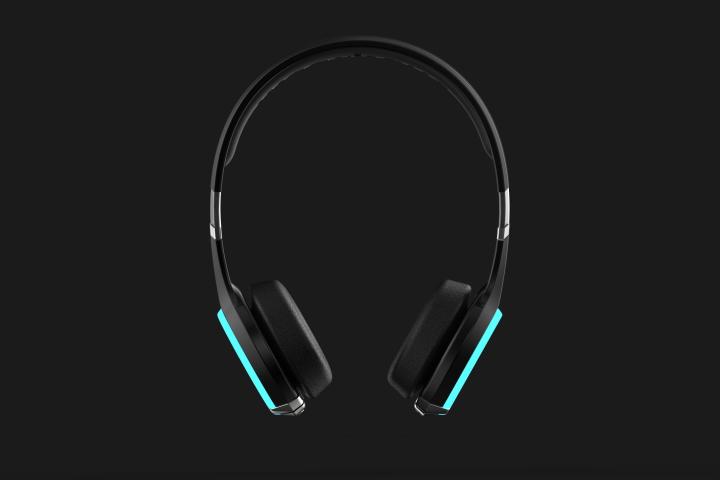
Headphone start-up Wearhaus is looking to return music to its social roots with a new pair of wireless headphones dubbed “Arc.” The glitzy cans blend a design splashed with glowing LED rings, with a localized form of music sharing for a unique take on headphone design. The headphones (which bear a striking resemblance to Beats cans) are nearing the conclusion of a successful crowdfunding campaign. As of the posting of this article, 9 days remain for the project to jump from just over $69,000 to its $75,000 goal.
Arc headphones use Bluetooth technology to sync multiple users’ listening experiences, meaning one can easily share a song with a nearby friend, or broadcast their playlist to every other Arc user in the area. Wearhaus co-founders (and Berkeley dropouts) Nelson Zhang and Richie Zeng were originally inspired by the so-called “silent disco” fad that’s cropped up at music festivals within the past decade or so. The idea involves a crowd of people all tuned into the same song(s) via headphones and manually synced-up portable music players – everybody’s dancing their asses off in time together, without the shared soundtrack dominating the room.
Depending on your privacy/sharing settings, any Arc user can tune into what you’re listening to at any time, synced to the exact same moment in the track via Bluetooth. Similarly, you can scan nearby users and join in on their playlist for a simultaneous listening session. All of this is controlled through the free Wearhaus app, available for both Android and iOS devices. Make friends and discover new music – that’s the goal of Zhang and Zeng. (Or should we say Zeng and Zhang?)
On the aesthetic front, users can also employ the app to choose one of seven colors to customize the glowing halos (or Arcs) that circle the headphones’ earcups. As the host site describes it, “You can also set your backlights to pulse to the music, in sync with friends, or turn off lighting entirely if you want to stay low-key.”
A profile of co-founders Zhang and Zeng over at berkeleyByte explains how the two friends were able to get their idea accepted into the Bay Area startup incubator Highway1, which helped the pair prototype their headphones and prepare them for manufacturing. The incubator also provides lectures by business school professors and founders of big-name companies, with topics ranging from supply chain management, to maintaining an inventory. Highway1 even flew the two to Shenzen, China to meet with manufacturers. Now the project is nearly ready to leave the nest.
Alongside the intriguing social aspect of the Arc design, additional features include noise isolation, on board mic functionality, touch/gesture controls, memory foam ear pads, an ergonomic/stress-tested headband, and a solid 16 hours of playback (10 while sharing). With a war chest of options, and striking style, the headphones appear ready to take on flashy competitors like Beats – at least when it comes to design and innovation. Brand recognition, on the other hand, is another story entirely.
As for the audio performance, we’ll have to wait and see if Arc’s co-creators spent as much time on sound design as they did cultivating the rest of the package. But if you’re already on board, you can preorder your Arc ‘phones now for $150, saving “$50 or more” on the final retail price.


